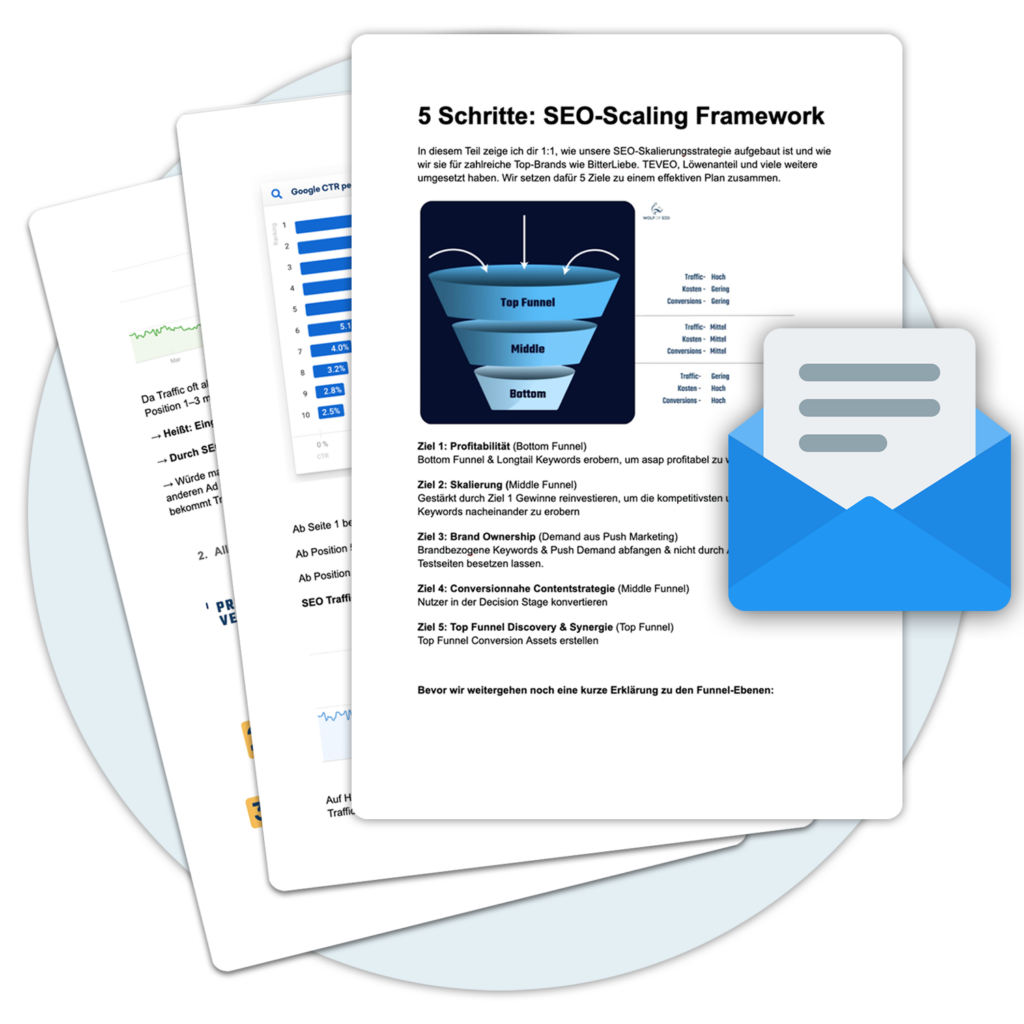
Web address redirection (URLs) is a common online practice to redirect visitors from a URL to another one. Redirects are often used to fix broken links or move to a new website. Website owners can also use redirects to URL-Masking use.
What is link masking?
Link Masking, also known as link cloaking, falls under the term URL-Forwards.
With link redirection, visitors to your domain will be redirected to another destination.URL forwarded. URL-Forwards are categorized according to the HTTP protocol, which is the framework for any data transmission on the Internet.
There are three main types of URL-Forwards:
Eine permanente 301-Weiterleitung wird verwendet, wenn sich die Ziel-URL of a web page has changed. It is often used when the URL structure changes or a website needs to be migrated to a new domain.
Eine temporäre 302-Weiterleitung leitet den Traffic for a short period of time to a new URL um. Developers use 302 redirects for A/B testing or to maintain a consistent website while pages are being fixed.
When you migrate a website to a new domain, the new domain has no authority for the Search engine optimization (SEO). Permanent 301 forwarding transfers 90 % of the old website's authority to the new domain.
Google needs to verify the new website, which causes a delay while the new domain is re-ranked. Some Webmaster use 302 redirects for migration, hoping to avoid Google's delay.
Link Masking URL Forwarding
For both 301 and 302 redirects, the new destinationURL in the address bar. A masked redirect allows you to use content from another domain while keeping the name of your original domain in the address bar.
You use the URL of your Homepage (your domain name) as URL for each page of your website. A masked redirect is also called URL-Cloaking or Link Masking called.
The mask (or cloak) refers to the fact that the URL in the address bar is not the actual URL of the content on the page. So your user thinks he is on one domain, when in fact he is on another.
The use of a URL-Mask offers some advantages, but it is not always the best experience for your users. Link Masking can be used for various reasons, for example, to hide referral links or to migrate a website.
However, as you will learn, this is rarely the best option.
Alternatives to link masking
The Link Masking birgt einige Probleme für die Benutzerfreundlichkeit (UX) und die Suchmaschinenoptimierung (SEO).
The good news?
There are several ways you can use the Ranking and improve the performance of your website, e.g:
- Manage separate domains and create links between them
- Consolidate content on one domain and permanently redirect old links
- Use canonical links to avoid being penalized for duplicate content
- Use a URL-Shortening service provider to beautify long URLs.
When could I use link masking?
There are situations when a website owner or developer wants to mask a link, for example:
Affiliate link masking. Some website visitors don't trust affiliate links because they know that you will earn money from their purchase. That's why some people use link cloaking to hide their affiliate links.
Shortening/improving links. Long, complicated links are unattractive. Some website owners shorten their links with Link Maskinginstead of using their domain name or the URL-scheme to change.
Hiding free web hosting URLs. If you use free web hosting services, your website lives on the Subdomain of the company. You cannot use your own domain. Some customers who use free web hosting mask the domain to make it appear that their website has its own domain.
Tracking. Some link tracking software uses Link Maskingto set tracking tags in the original URL to hide.
When should I avoid link masking?
So, link and URL-Masking kann auf den ersten Blick ziemlich nützlich erscheinen, besonders wenn du versuchst, eine lange und komplizierte URL kürzer und benutzerfreundlicher zu gestalten. Aber es gibt definitiv Situationen, in denen du dieses Tool lieber vermeiden solltest. Hier sind ein paar davon:
1. in affiliate marketing: Some affiliate programs prohibit the masking of links. If you don't comply with the conditions, it may result in you being kicked out of the program.
It's like you're running a marathon with a hidden engine. If the organizers find out, you're out!
2. in search engine optimization (SEO): Search engines can sometimes have trouble correctly recognizing and indexing masked URLs. This can have a negative impact on your SEORanking impact.
Imagine hiding a sign with your business name behind a curtain. Passers-by (in this case search engines) have difficulty seeing and passing it on.
3. when tracking and Analytics: If you mask links, this can cause analytics tools like Google Analytics Have difficulty measuring traffic correctly.
It would be like you're trying to keep track of the guests at a party, but they're all wearing the same mask. Confusing, isn't it?
4. in building trust: Some users are wary and suspicious of masked links. They might think that you want to redirect them to a fraudulent site.
It's like you're trying to reach out to someone in a dark room. He will hesitate because he doesn't know exactly who or what is there.
5. in case of legal requirements: In some areas, such as affiliate marketing, you need to be transparent and show the user where a link leads. Link Masking could get you into legal trouble.
That would be like hiding a food label in a restaurant. You just can't do that.
In conclusion: Even if link and URL-Masking ihre Vorteile haben können, ist es wichtig, die potenziellen Nachteile und Risiken zu verstehen. Es ist ein bisschen wie mit einem Zaubertrick – er kann beeindrucken, aber wenn er schief geht, könnten die Folgen unangenehm sein. Nutze es also weise! 😉
Tools for URL Masking
There are a few different websites and tools you can use to mask URLs. Here are a few examples:
- TinyURL: This is probably one of the most popular services for masking links. It creates a short URL, die auf die ursprüngliche lange URL refers.
- Bitly: Ein weiterer beliebter Dienst zum Maskieren von Links. Es erstellt auch kurze URLs, die auf die ursprüngliche lange URL verweisen. Es bietet auch weitere Funktionen wie die Möglichkeit, die Anzahl der Klicks auf einen Link zu verfolgen.
- Rebrandly: A link management tool that allows you to create and manage custom links. It also offers the possibility to track the number of clicks on a link.
- Hootsuite Link Shortener: A tool provided by Hootsuite that allows you to shorten and manage links when you use Hootsuite to manage your social media.
- WordPress Plugins: If you have a WordPress website, there are many plugins that allow you to mask links. An example would be the Plugin „Pretty Links“
- Google URL Shortener: A service from Google that allows you to shorten long URLs into short ones.
There are many other websites and tools you can use to mask links. It depends on what features you need and what platform you use. It's also worth checking the terms of use and privacy policies of the services before you decide to use them.
WordPress Plugin for URL Masking
There are a few WordPress plugins you can use to mask URLs in your WordPress website. Here are a few examples:
- Pretty Links: This is probably one of the most popular WordPress plugins for Link Masking. Es ermöglicht es dir, benutzerdefinierte URLs zu erstellen, die auf die ursprüngliche URL verweisen. Es bietet auch die Möglichkeit, die Anzahl der Klicks auf einen Link zu verfolgen.
- Shortlinks by Pretty Links: Another popular WordPressPlugin, das es dir ermöglicht, kurze Links zu erstellen, die auf die ursprüngliche URL refer.
- Link Masker: Another Pluginthat allows you to create and manage custom links.
- Redirection: A Pluginwhich allows you to manage and create redirects on your website. It also offers the possibility to track the number of clicks on a link.
- Easy Redirect Manager: Another Pluginwhich allows you to create and manage redirects.
- WP Link Shield: A Pluginwhich allows you to create and manage custom and encrypted URLs.
There are many more plugins you can use to mask URLs in your WordPress website. It depends on what features you need and what kind of user interface you prefer. It's also worth checking the ratings and number of downloads of the plugins before you choose one.
How to use prettly links to mask your URLs
The Pretty Links Plugin is one of the most popular WordPress plugins for masking URLs. Here is a tutorial on how you can use it:
- Download the Plugin and install it in your WordPress website. You can either download it from the WordPressPlugin-directory or by uploading and installing the ZIP file.
- Activate the Plugin, nachdem du es installiert hast. Du wirst nun einen neuen Menüpunkt „Pretty Links“ in deinem WordPress-Dashboard see
- Click on "Pretty Links" and then on "Add New" to add a new link.
- Gib die ursprüngliche URL ein, die du maskieren möchtest und wähle eine benutzerdefinierte URL aus, die auf die ursprüngliche URL should refer.
- You can also choose some other options, such as tracking clicks, creating 301 redirects or creating Nofollow-Links.
- Click on "Create" to create your link.
- You can now use your links in your posts, pages or custom fields.
- To track the clicks on your links, click on "Pretty Links" and then on "Link Details", where you can see an overview of the clicks on your links.
This was a rough overview of how you can use Pretty Links, there are still many settings and extensions you can use, depending on what you have for a project. It is worth to read the documentation of Pretty Links thoroughly to use the full power of the plugin.
Advantages of link masking
The main reason for the use of Link Masking is the concealment of an undesirable targetURL. In the above examples, you can see that affiliate links, long URLs and subdomains are not the best URLs to display in an address bar.
The URL-Thus, masking is used to hide elements such as affiliate IDs and tracking tags that might scare users away. By masking the URL website operators hope for more visits, engagement, and conversions.
However, when it comes to the overall user experience, the disadvantages of the Link Masking often the advantages.
Disadvantages of link masking
- Link Masking leads to UX problems that can harm the authority of your website and your SEO-Ranking can harm.
- Link Masking can create a poor user experience if you do not know the true targetURL you create a poor user experience that can undermine the trust of your visitors.
- When the URL in the address bar doesn't change as users navigate through your site, it's easy to get lost. Even worse, users who notice this might distrust you.
- Online spammers often cloak URLs to hide malicious content. When visitors notice that you are disguising links, they will wonder what you are hiding.
- Masked URLs make it impossible for users to share or save your content. If someone tries to use the URL copied or bookmarked, it will only copy your Homepage Save.
- You should URL-Avoid masking if you want your visitors to trust and share your content.Link Masking has a negative impact on search engine optimization URL-masking not only disrupts the user experience on your website, but also causes problems that can affect your SEO.Ranking lower
Use cases
Link Masking is especially useful for protecting, hiding, or shortening links. It can also be useful for sharing links via social media, since the original URL is no longer visible.
Examples
An example of Link Masking is the conversion of a long and complex URL into a shorter and simpler URL. Another example is the use of an obfuscated link to hide a website.
Further use cases of URL Masking:
- Hide the actual URL: URL Masking can be used to mask the actual URL of a website and replace it with a different, easier to remember URL to replace. This can be useful when the actual URL is too long or difficult to remember.
- Hide affiliate links: URL Masking can be used to hide affiliate links and replace them with a different URL that looks less like an affiliate link. This can help the link look more trustworthy and increase the click-through rate.
- Hide tracking links: URL Masking can be used to hide tracking links and replace them with another URL that looks less like a tracking link. This can help users be more willing to click on the link because they do not recognize it as a tracking link.
- Hide content: URL Masking can be used to hide certain content on a website and make it accessible only to selected users. For example, this can be used to make certain content available only to paying members.
- Redirection to another web page: URL Masking can be used to redirect users from one web page to another without showing them the actual URL see the target page. This can be useful in marketing campaigns, for example, to direct users to a Landing Page redirect.
Conclusion
Link Masking is a technique used to convert long and complex URLs into shorter and simpler links and obfuscate the original URLs. It can be used for various use cases, such as protecting links, hiding URLs or shortening URLs.
It's a bit of a double-edged sword. On the one hand, it can be super handy for making your links more beautiful and user-friendly. But on the other hand, it can also bring some pretty serious drawbacks.
« Back to Glossary Index





